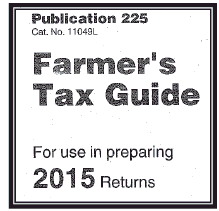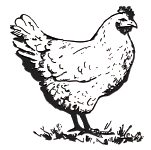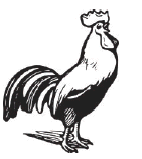

To send a message to an author, click on the author's name at the end of the article.
This Month in Ag Connection | Ag Connection - Other Issues Online
The 2015 income tax season is here with changes and clarification of items being made by the IRS and Congress. The following provides an update and clarifications:
Section 179 deduction: the new Act allows farmers and small businesses to deduct $500,000 of the tax basis of certain business property or equipment during the year in which the property was placed in service. The spending cap is increased from $200,000 to $2 million, meaning the deduction will begin a dollar-for-dollar phase-out only when the taxpayer spends more than $2 million on qualifying assets. These changes are implemented with a retroactive effective date of January 1, 2015. Future amounts will be indexed for inflation.
Bonus Depreciation: The new Act also restores 50 percent bonus depreciation, but only for a time. This tax benefit had also expired at the end of 2014. Congress chose to phase-out this benefit over a five-year period. Producers can claim an additional first-year tax deduction equal to 50 percent of the value of qualifying property during tax years 2015, 2016, and 2017. Congress has then reduced the depreciation amounts to 40 percent in 2018 and 30 percent in 2019. Bonus depreciation is slated to disappear altogether for property placed into service in 2020 or later.
More details on this very recent legislation will be in future newsletter articles.

Remember, one must treat an employee as an employee (W-2, income tax withheld) and a non-employee with a 1099 when you pay them over the $600. Doing it incorrectly can also bring on the penalties.
County Extension Centers have free Farmer's Tax Guides, an excellent income tax resource. Some offices also have 1099 forms and other tax forms. The 1099 forms are carbon copies so cannot be downloaded off the Internet. If you have specific income tax questions, please contact Joe Koenen by email: koenenj@missouri.edu or a regional ag business specialist.
Source: Joe Koenen, Ag Business Specialist
This Month in Ag Connection | Ag Connection - Other Issues Online
Scientists have been working for years to develop the technology to offer novel endophyte technology in tall fescue. Currently, many forage seed suppliers are offering novel endophyte tall fescue varieties. Novel endophyte tall fescues are designed to have the best possible persistence, comparable to "hot" endophyte varieties like Kentucky 31 (K31), but with a "novel" endophyte which improves persistence without producing toxins.

Many cattle producers have observed the symptoms of toxic K31. Producers may choose to use management practices to minimize the toxin's negative impact. With the introduction of novel endophyte tall fescue varieties, producers have another option to consider. This new option may be most appealing when converting row crop fields to perennial pastures or hay fields.
A number of farmers are familiar with new and improved plant varieties, and the methods plant breeders use to improve yield and other agronomic characteristics. Certification entities exist to help technology owners, distributors, and farmers manage the complexities of buying and selling seed. The results of these certifications are often printed on a tag found on the seed package. University of Missouri Extension specialists, among others, recognized novel endophyte fescue varieties were a seed product unlike any other, consisting of an improved fescue variety, as well as, a novel endophyte. This presented a need for additional certification work to help seed producers and customers communicate the contents and value of each seed package. In other words, there was a need for a certification tag containing information that could verify seed advertised as novel endophyte does indeed contain viable novel endophyte.
The Alliance for Grassland Renewal was formed in 2012 to meet this need. The alliance consists of public and private entities working together to provide novel endophyte tall fescue technology a fair opportunity in the forage seed market. The Alliance for Grassland Renewal offers educational information on its website, www.grasslandrenewal.org. The alliance also coordinates a certification system that places an Alliance for Grassland Renewal certification tag on bags of novel endophyte tall fescue varieties. The alliance is also continuously working to evaluate the benefits of novel endophyte tall fescue as a component of farming systems which are profitable while conserving soil and other natural resources. For more information about novel endophyte tall fescue and the Alliance for Grassland Renewal go online to www.grasslandrenewal.org or contact your local University of Missouri Extension agronomy or livestock specialist.
Source: Max Glover, Agronomy Specialist
This Month in Ag Connection | Ag Connection - Other Issues Online
Maintaining a small poultry flock is growing in popularity. Backyard flocks can provide eggs, meat, and an opportunity for all family members to participate and learn animal care. Concerns over animal care occur during the two extremes of weather, the heat of summer and the cold of winter. Most poultry can tolerate very low temperatures as long as they are kept dry and provided a wind block. Down feathers cover adult birds as well as chicks, which are used for insulation. The feathers are fluffed up by the adult bird, trapping air underneath to increase the insulation provided by the feathers. While most poultry can tolerate low temperatures, below are some ways to help protect the backyard flock during the winter.

Housing
Insulation is usually not required in Missouri and can even be detrimental. Insulation can decrease ventilation, leading to a buildup of condensation and increased moisture inside the house. Ventilation is very important for the removal of carbon dioxide and the reduction of moisture levels. Insulation also encourages rodents to take refuge. However, if there is extreme low temperatures (-20°F) forecasted for an extended amount of time; temporary insulation should be considered.
Heat lamps are not recommended inside the house as they can be a fire hazard and cause temperature changes from one area of the house to another which can increase morbidity. Heat lamps can be used if the temperature is below zero for a long period of time. If a heat lamp is used, red heat bulbs are suggested instead of white heat bulbs to decrease potential cannibalism.
Bedding inside the house should be kept as dry as possible. Wet bedding increases the ammonia levels inside the house. Wet and caked material should be removed and dry bedding added as needed. Any absorbent material that decreases moisture and serves as an insulating material during cold weather can be used as long as it is clean, mold free and dry but not dusty. Pine shavings, rice hulls, peanut shells and ground corn cobs are all good products to consider. If housing laying hens, pine shavings should be avoided due to an off flavor in the eggs reported due to the consumption of pine tar. Note that hardwood shavings sometimes produce a mold that can cause a serious infection when inhaled by the birds.
Perches inside the house can also help the birds stay warm by allowing birds to get off of the floor. Perches should preferably be made of wood.
Feather pecking can increase if birds are used to going outside and then restricted to inside due to cold weather and can lead to cannibalism. Producers can add items to prevent or treat this problem, such as:

Outdoor Runs
Most poultry will venture into the snow if it is not too deep. If the snow is deep, producers should shovel an area outside to encourage birds to venture out of the house. There are some concerns when poultry go outside; such as incidences of frost bite on toes and feet. When feet thaw they can blister, which can burst open leaving open sores on the toes and feet. If frostbite is severe and a foot is lost, humane euthanasia is recommended. For less severe cases, lotions and antiseptics can be used. Vaseline can be applied to the feet and combs of birds to help prevent frostbite; however, this is not practical for large flocks. Outside runs should have plastic wrapped around a major portion to block the wind. Wind ruffles the feathers decreasing the birds' abilities to hold in heat. Significant wind chill can increase the incidence of frostbite and bird mortality. Runs should be kept as dry as possible with bedding added to areas of high traffic, such as the entrance to the house and around feeders and waterers.
Nutrition
Poultry have an increased energy demand during the cold weather due to the energy expended for body temperature maintenance. It is best to provide a high quality, commercially prepared feed; which is available for specific ages and types of birds. Processing feed into pellets or a crumble form increases the cost over mash form; however, it also increases palatability and usually decreases feed waste. Supplementing the diet with scratch grains, such as cracked corn in the afternoons can be beneficial. Table scraps, including stale bread, leafy vegetables and peelings can also provide variety while decreasing feed cost. Producers should limit treats to what can be eaten within 10-20 minutes. Treats should be given in the afternoons to encourage birds to eat the balanced diet first. Egg shells are a good source of calcium, but should be crushed to prevent egg eating habits, if they are going to be fed back. Water is essential to bird health, and thus fresh, clean water should be available continuously. Waterers and feeders should be moved to new locations regularly to prevent caking and wet areas inside and outside the house. Commercial heated waterers or heated platforms are available. Aquarium heaters placed in buckets with nipple drinkers also work and can decrease water waste as well.

Laying during the winter
Poultry come into lay with increased day length and go out of lay with decreased day length. Producers must decide if they want their flock to remain in lay during the winter, or the birds to rest. In order to keep birds in lay through the winter, supplemental light is needed at 14 hours of light/day. Do not go over 16 hours of light/day as this can induce cannibalism. The extended day length can be added in the morning or evening. Egg collection should be done at least once a day.
Backyard flocks can be rewarding for all members of the family. With a little extra care and attention poultry can thrive during the winter. More information can be found at https://articles.extension.org/poultry or by contacting an University of Missouri Extension livestock specialist.
Source: Heather Conrow, Livestock Specialist
This Month in Ag Connection | Ag Connection - Other Issues Online
More classes will be added including Carroll, Chariton and Sullivan counties. To register, call the phone number listed by the location.
Publishing Information
Ag Connection is published monthly for Northeast and Central areas of Missouri producers and is supported by the University of Missouri Extension, the Missouri Agricultural Experiment Station, and the MU College of Agriculture, Food and Natural Resources. Managing Editor: Mary Sobba.